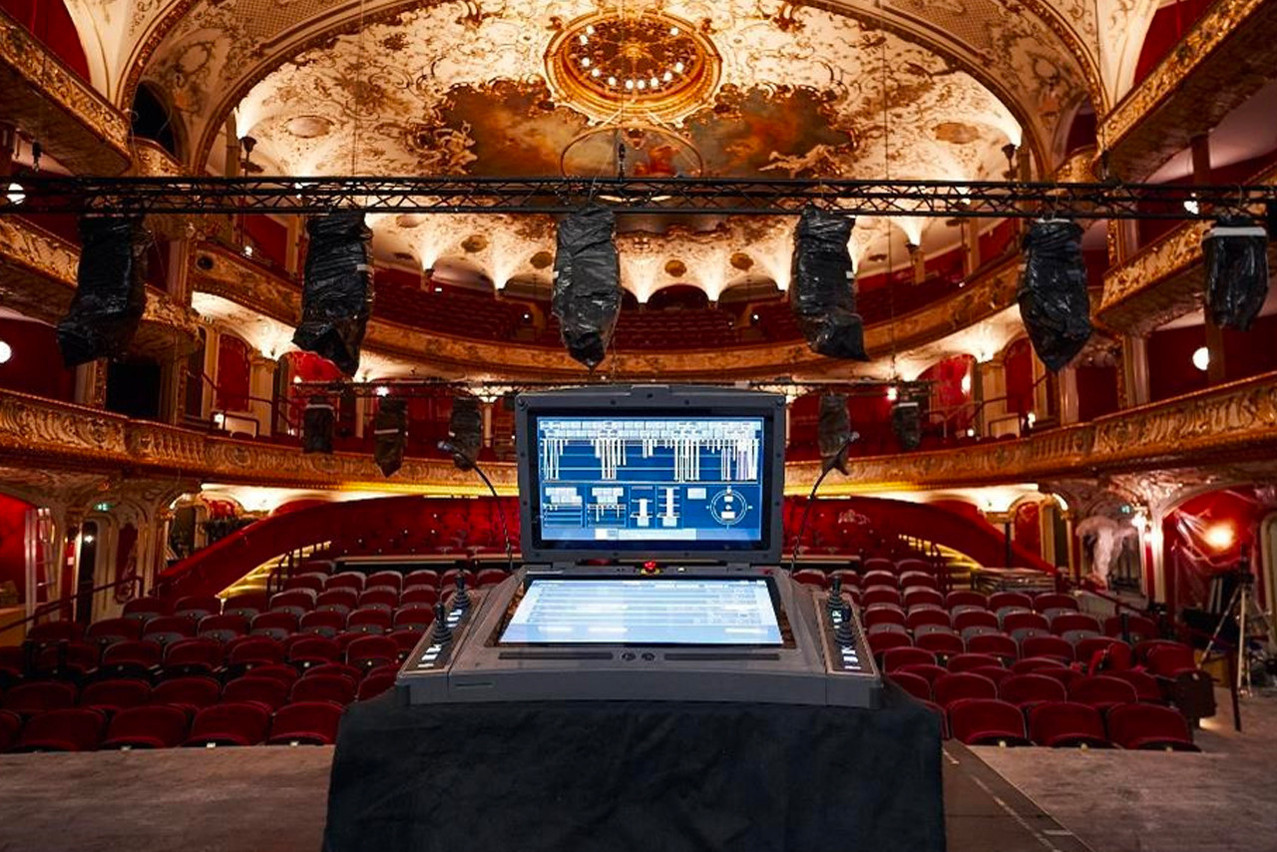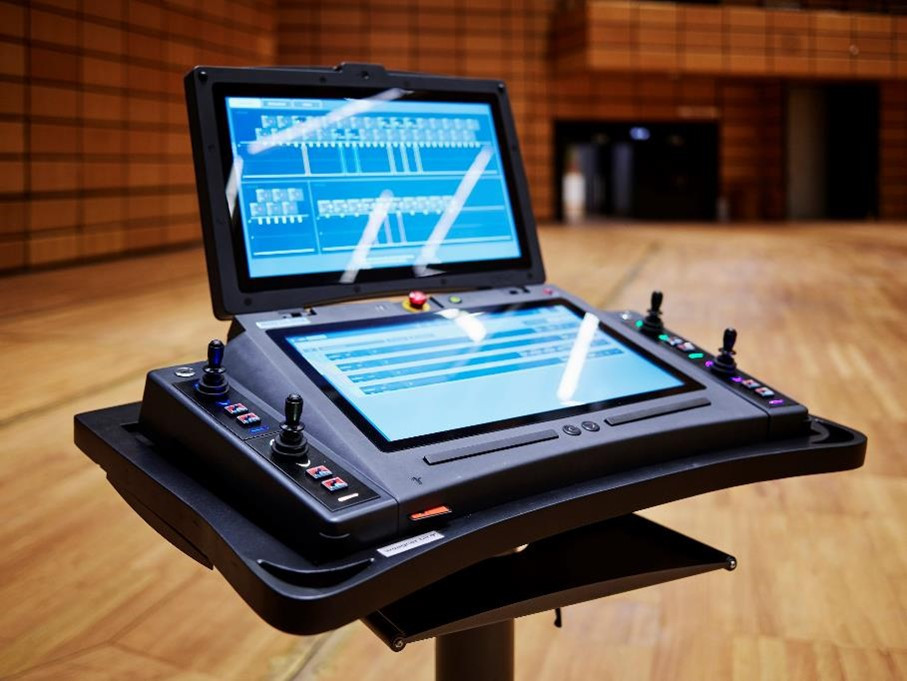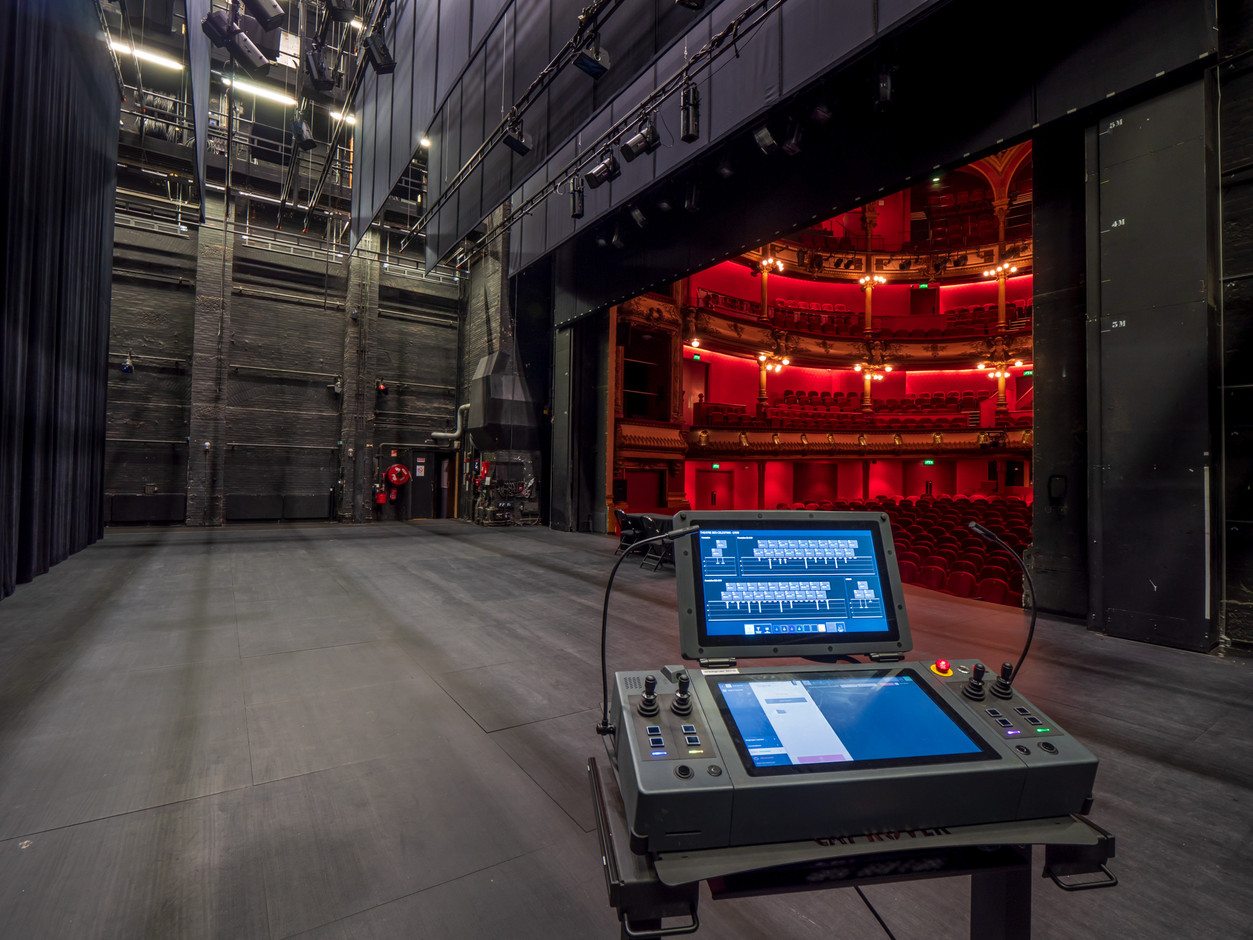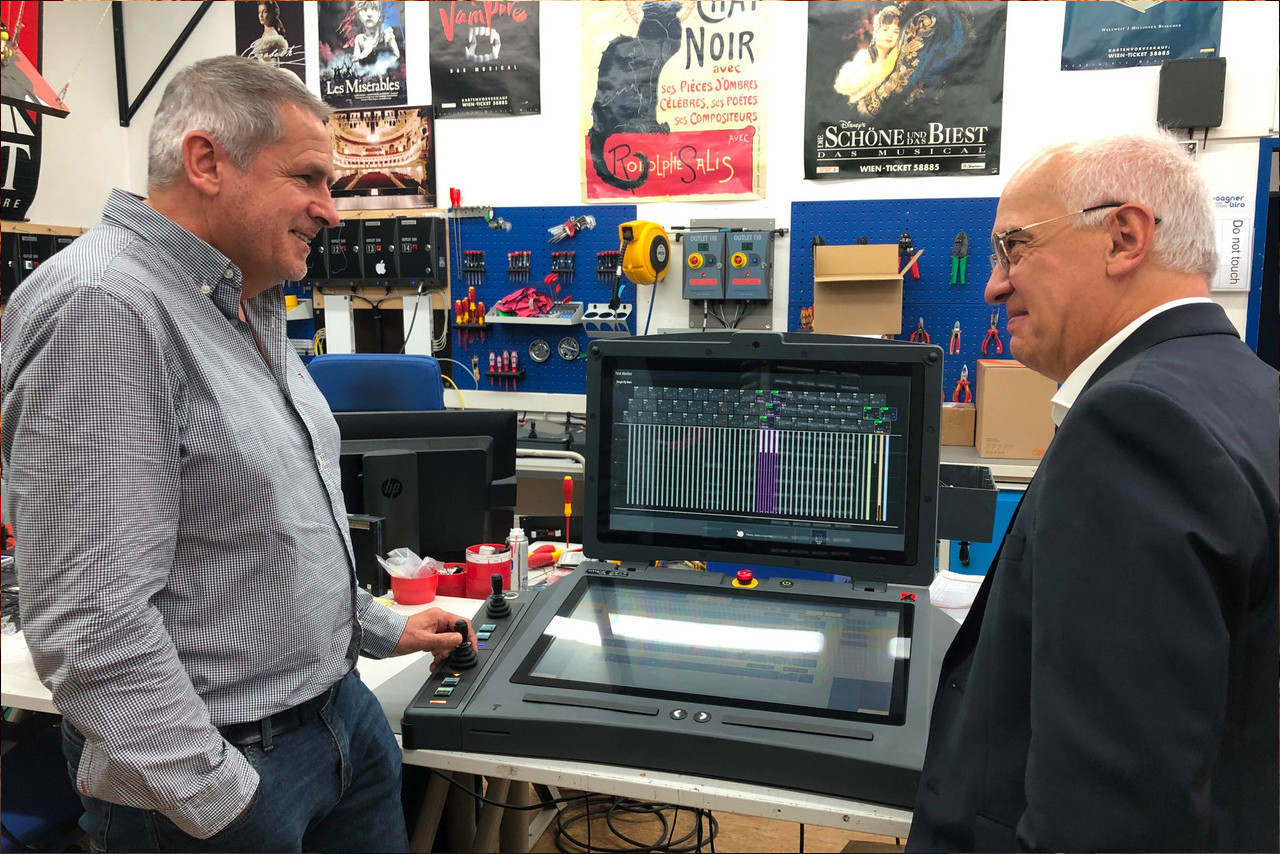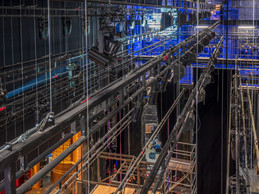When you see the discreet red building on the corner of rue de l’École in Rodange, you’d never guess that it hides a company that equips stages the world over, from the Sydney Opera House to the Esplanade Theatre in Singapore Harbour.
As you push open the door of Waagner-Biro’s workshop, the control screens scattered among the tools and the various show posters hanging on the wall give you a clue to the company’s activities in Luxembourg. CEO Jean-Marie Schiltz approaches one of the machines, known as the CAT V5. Several items are displayed on the top screen. He selects seven of them and uses the joystick to move them around on the lower screen. “Here, we use the workshop version, but in a theatre, it could be the curtains that open,” explains an employee.
The Luxembourg company has been developing computer-assisted control systems for theatres for over 30 years, enabling them to move different sets around the stage. Now it has joined forces with the Luxembourg Institute of Science and Technology (List) to develop a new tool.
‘Disruptive’ innovation and list of challenges
“The sets move thanks to different rails on the floor. They can move from left to right or in depth. It’s not very flexible,” states Jean-Pol Michel, head of industrial partnerships in List’s digitalisation department. “Mr Schiltz’s idea is to create autonomous carriages, on which the sets can be placed, and which can be moved around the stage in a flexible way. You could imagine a scene where Alibaba snaps his fingers and a chair arrives in the middle of the room, for example. It’s what you might call a disruptive innovation in the stage management business.”
Why wasn’t this type of carriage system introduced earlier? “We have problems with the reliability of the network,” explains Schiltz. His project partner then lists the “challenges” that his team of engineers is trying to meet: “We’ll need very advanced connectivity, so that we can always be in contact with a very large number of carriages. In an environment where it can be dark, smoky, wet... The second is location. The system must always know exactly where the carriages are,” sometimes to the nearest millimetre. “Then there’s robustness. To ensure this, we use predictive maintenance. We collect data on the behaviour of the carriages and if we see that at some point they stop reacting in milliseconds, there’s a problem and they need to be replaced. We’re going to use artificial intelligence and data analysis. We’re also going to use augmented reality to design the scenes in from the start.”
To take the idea from concept to reality, Waagner-Biro’s CEO enlisted the help of Luxinnovation, which put him in touch with List. From an initial videoconference in the middle of the February 2022 holidays, the partners began to work on defining the project, until officially submitting it for funding to the ministry of the economy last December.
€6.8m budget
The application has just been accepted, and the government will contribute 57% of the budget, set at €6.8m for a four-year period (from January 2023). 15% of the funding will be used to reward the alliance between the private sector and public research and therefore, indirectly, to pay List. Waagner-Biro will use its own reserves to finance the rest of the development. “With the banks, it doesn’t work at all. They are very reluctant to take on this kind of project,” states its CEO. List is adding a contribution from its own pocket for research, which could eventually be used for other projects, depending on the decision Waagner-Biro takes on intellectual property once the system has been created. “These are autonomous vehicles. They could be used in logistics, for example,” explains Michel.
In his business plan, Schiltz expects to recoup his investment within ten years.
When he co-founded the company in 1987 with Roland Jacoby, it was called Guddland Digital and focused on the industrial sector. After shifting its focus to culture in 1989, it sold 51% of its shares to the Austrian group Waagner-Biro in 2002--thus taking on its current name.
€3m Hong Kong contract
With its 53 employees, the company generated sales of €9.9m in 2022. “Half comes from Asia,” estimates its CEO. The Luxembourg business accounts for nearly a quarter of the €40m-€50m turnover of the Waagner-Biro group, which has offices in Germany, the UK and China, and employs 180 people.
In Vienna, where the head office is located, “they make the machines, the mechanics,” states Schiltz. “Here, we make the machines work, IT development and quality control.”
The company has recruited six people to develop its new project with List--in which virtually all the engineers are involved. At the technology institute, there are “five research teams” and “ten people” focusing on the development of the Waagner-Biro Luxembourg wagons, says Michel. The teams meet “every first Tuesday or Wednesday of the month.”
Meanwhile, the company continues to grow. “We have just signed the biggest contract in our history for a theatre in Hong Kong, worth €3m,” boasts the CEO, who counts “more than 250 theatres” equipped with his systems in 40 countries. And to support its growth, Waagner-Biro will be looking for new offices for its staff next year.
Read the original French version of this article on the site
